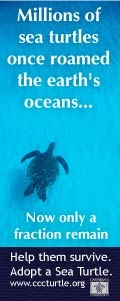Posted by Elena del Valle on September 6, 2013
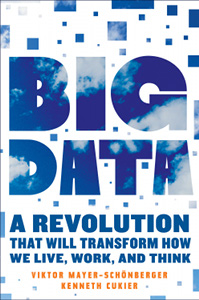
Big Data book cover
Photos: Houghton Mifflin Harcourt
The recent revelations of government surveillance of United States citizens electronic and phone communications via National Security Agency programs has brought the issue of data collection at a mass level to the foreground. Other government programs such as police department vehicles photographing random vehicles as they drive around and the United States Postal Service program that photographs all mail and opens some mail for inspection have come to light recently. Privacy advocates draw attention to the lack of regulations for the use and storage of all that data and the potential harmful effects and unintended consequences it might bring.
Add that to data the private sector gathers on its own employees and consumers for marketing and sales purposes, often without their knowledge, from public and private sources such as credit reports and social media pages and it’s enough for reasonable people to be wary. In Big Data A Revolution That Will Transform How We Live, Work, and Think Viktor Mayer-Schönberger and Kenneth Cukier (Eamon Dolan/Houghton Mifflin Harcourt, $27) suggest that big data gathering and analysis is transforming the way we see people and the world in a revolutionary way.

Kenneth Cukier, coauthor, Big Data
In the 242-page hardcover book, they share with readers insights on the interesting and alarming impact they believe electronic surveillance is having on our lives from business to government, science, safety and privacy, and how we think and view patterns and the world. From employee monitoring via GPS tracking to player scouting and the business search for efficiencies that drive profits big data is changing the way we do things.

Viktor Mayer-Schönberger, coauthor, Big Data
They point out that data compilation should be more than cold hard facts and information. There should be a space for human intuition, serendipity and common sense, they say; adding that “What is greatest about human beings is precisely what the algorithms and silicon chips don’t reveal…” because it can’t be captured in data.
The less glamorous worrisome side of data gathering concerns privacy in a setting in which notice to individuals, consent, opting out and anonymity are almost no longer possible, they point out. Between government surveillance and commercial tools like apps personal data is used, sold, and repurposed for use by others in ways that were not thought about when the data was gathered. Predicting consumer behavior based on data could lead to dangerous and even amoral uses.
Mayer-Schönberger is professor of Internet governance and regulation at the Oxford Internet Institute at Oxford University. Kenneth Cukier is data editor at The Economist.

Click to buy Big Data
Comments:
Filed Under: Books
Posted by Elena del Valle on August 29, 2013
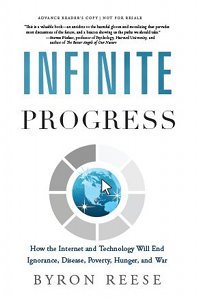
Infinite Progress book cover
Photos: Byron Reese
Our future is rosy. So much so that ignorance, disease, poverty, hunger and war will end thanks to technology and the Internet. The power of technology to transform our lives will be so profound as to usher in a new golden age. So believes Byron Reese founder of several high tech companies and head of research and development for another.
In his book, Infinite Progress: How the Internet and Technology Will End Ignorance, Disease, Poverty, Hunger, and War (Greenleaf Book Group, $25.95) he explains his thinking.
It took Reese six months to write the book, in the evenings. It was originally much longer, he explained by email.
“The book is aimed at a general audience. I suspect that optimists will be more inclined to read it than pessimists,” said the author in response to questions about the target audience for his book and the response he has had so far to the idea of a future golden area brought by technological advances. “People have responded enthusiastically. There are many people who want to believe in a better tomorrow, but the relentless negativity of the media has caused people to call it into doubt. I wrote the book as a case to defend the optimistic viewpoint.”

Byron Reese, author, Infinite Progress
The 295-page softcover book, published March 2013, is divided into an Introduction and seven sections: An Optimist’s Reasoning in Five Easy Premises, The End of Ignorance, The End of Disease, The End of Poverty, The End of Hunger, The End of War, and In Conclusion.
He says in the chapter about poverty that technology is able, without limits, to raise standard of living worldwide. Machines will do more of the labor that doesn’t require human capabilities, allowing people leisure time and abundance.
If we look at history, he says, technology and free enterprise will inevitably lead to wealth even for the poorest people in the world until poverty, as we define it today, ceases to exist. Reese is chief innovation officer at Demand Media in Austin, Texas.
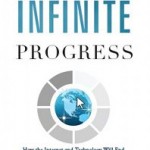
Click to buy Infinite Progress
Comments:
Filed Under: Books
Posted by Elena del Valle on August 19, 2013

Up to 20 percent of broccoli’s nutritional content is from protein
Photos: HispanicMPR.com, Truth Be Told
Although only seven percent of people in the United States claim to be vegetarian and increasing number of consumers indicate they are purchasing meat alternatives, according to Meat Alternatives US June 2013, a Mintel report available for purchase at $3,995. In 2012, sales of meat alternative products across a variety of conventional and specialty channels, reached $553 million, according to the survey company’s data. That was equivalent to an 8 percent growth compared to 2010.
Popular meat alternatives include seitan, almonds, soy and soy derivative products such as tempeh and tofu, legumes and beans, dairy products such as cheese, milk and yogurt, quinoa, and broccoli to name a few. Some people consume these items to cut back on the costs of expensive meat products. Some shoppers like their health benefits while others seek to replace meat and protein in their diets.

Tofu Shirataki noodles
One such product promoting health and variety is Tofu Shirataki noodles made with tofu and Japanese yam powder or konnyaku. The products are touted as a low-calorie healthy alternative to wheat pastas since each four-ounce serving has only 20 calories and three grams of carbohydrates. The promotional materials point to the benefits of soy and added protein. Similar examples cram the shelves of supermarkets and health food stores.
Thirty-six percent of respondents to a March 2013 survey of 2,000 adults by Mintel said they buy meat alternative products. Those consumers indicated they purchase such products for their health benefits rather than as meat substitutes.
Many respondents (67 percent) who didn’t say they purchased meat alternatives indicated they preferred real red meat while 34 percent said they didn’t enjoy the flavor of alternative products and 20 percent said they didn’t like the texture.
Asians and Hispanics rely more heavily on the use of meat alternatives compared to other consumer segments and Hispanics want variety, according to Mintel findings. These market segments appear to consume meat alternatives more than once per week.
White shopper who responded to the survey over index in their consumption of meat alternatives because they believe they are healthy. Respondents from other race groups said the are more likely to buy the products for their the taste.
Asian (45 percent) and Hispanic (46 percent) shoppers who took the survey said the are more likely than average to cook with meat alternatives in addition to meat and less likely than average to use the products as meat substitutes. Hispanic and Asian survey takers said they are also more likely to serve meat alternative products as a side dish than as mains.
In addition, the report indicates Hispanic shoppers who took the survey said they are interested in information about these products. They would like to know about the ingredients they are made from and how to cook with them.
Posted by Elena del Valle on August 14, 2013
By Chris McGinnis
Business travel expert
Best Western
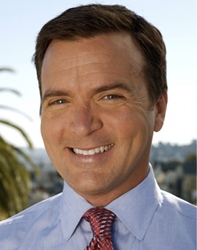
Chris McGinnis, business travel expert, Best Western
Photo: Melissa Wuschnig
Higher prices on airfare and lodging are a healthy indicator of the travel industry’s comeback. In fact, most major airlines are reporting strong profits in recent quarters after several years of capacity reductions, consolidation and the addition of new fees.
As the industry continues to experience a revival, business travel costs are increasing across the globe. In the U.S. the average per diem for food, hotel and miscellaneous expenses in the top 100 cities rose to $262 this year, up 1.6 percent over last year. As businesses prepare for the fall business travel season, business owners and managers can prepare for the season and save the company’s travel budget by considering the following:
Click to read the entire article Budget and save when traveling for business
Posted by Elena del Valle on August 9, 2013
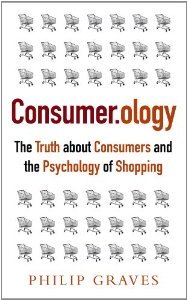
Consumer.ology cover
Photos: Nicholas Brealey Publishing
Our unconscious mind makes decisions without checking in with our conscious mind. So believes Philip Graves, a consumer behavior observer. It doesn’t always matter what we think we should do or anticipate we will do in a given situation if we’re asked in advance. Instead, what matters is what we actually do when the situation arises. Often the two conflict, according to Graves.
In Consumer.ology The Truth about Consumers and the Psychology of Shopping (Nicholas Brealey Publishing, $19.95), a 225-page softcover book published this year, Graves addresses consumer behavior as it relates to shopping.
He proposes that people’s psychological traits are more likely to determine their behavior in response to something new than whatever they might believe or respond when asked by a researcher. The unconscious mind and context mold our thoughts and behavior in unexpected ways, according to him.
For these reasons, in his view, market research is a waste of money, a false science. This is proven, according to him, because people frequently don’t do what they say they will do when responding to surveys and market researchers questions.
“It’s hard to generalise by sociodemographic groups and, often, not particularly helpful to do so: often it’s better to look at a type of behaviour and work back from there. That said, as a generalisation, I see men and women going about shopping in quite different ways sometimes,” Graves said by email when asked whether he has observed shopping trends by groups of people with common characteristics.
“Men are often more specific in their focus and less good at browsing to find what they want; they also tend to have a greater need to feel powerful in interactions with retailers (although, in the face of genuine product expertise this tends to go away). That said, I would say that more and more men are shopping in a way that was characteristically female a few years ago: enjoying browsing and using shopping as a leisure pursuit in its own right.”
In lieu of market research he suggests the AFECT approach (analysis of behavioral data, frame of mind, environment, covert study, and timeframe) for companies to evaluate the usefulness of consumer insight favors the method he believes “embraces a true awareness of the consumer decision-making process and how the subconscious mind drives shopping behavior.”
It took the author one year to research the book which was first published in 2010. Later he decided additions were necessary and spent a month on the extra content for the updated edition published in 2013. When asked about challenges and rewards of writing the book he said: “The biggest challenge I’ve had in presenting the issues from the book is when I run into people’s beliefs surrounding traditional market research. Rather than participate in a constructive debate or weigh up the evidence, some people who have been heavily involved in market research won’t consider the issue scientifically. I understand the psychology involved, but it still sometimes surprises me that people with so much to gain by reevaluating what they do aren’t willing to do so; after all, this is about their job, not their religion!
The biggest reward is, without doubt, the opportunities that having the book out there in the world have brought to me; opportunities to travel the world, meet fascinating people and explore their challenges with them. So far I’ve given talks at events in the UK, Brazil, Belgium, Germany and the US (including to the EU and UK Cabinet Office), become an associate of the UK’s leading economics consultancy, Frontier Economics, and joined the advisory board of Next IT, a US technology company that leads the market in intelligent virtual assistants. The joy for me comes where other people take my work and invite me to help them build on it through applying the principles to their business.”

Philip Graves, author, Consumer.ology
To the question of whether it’s ethical to attempt to influence people’s unconscious minds without their realizing it he responds that all communication is intended to influence. Graves has twenty years of experience observing consumers, first as a traditional market researcher and later using psychoanalytical techniques. He has advised Comet, ITV, Whirlpool, Doc Martens, New Convent Garden Food Company, Camelot, Virgin Media, Hotpoint, Lloyds TSB, Pepsi, and HSBC.
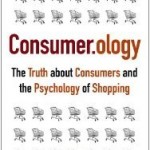
Click to buy Consumerology
Comments:
Filed Under: Books
Posted by Elena del Valle on August 2, 2013

Boxing for Cuba book cover
Photos: Fulcrum Books
In the 1950s, the Vidal Family like many in Cuba who saw the country spiraling downward, sent their three children to the United States in search of safety and a better future. Operation Peter Pan made that possible but instead of placing the brothers with relatives in Miami, as the Vidals had hoped, they were sent to the Sacred Heart Orphanage in Colorado for four years.
Guillermo Vicente Vidal, one of the boys, now an adult living in Denver, shares his and his family’s story in Boxing for Cuba An Immigrant’s Story (Fulcrum Books, $18.95). The 248-page softcover book first published in 2007 is divided into 14 chapters.
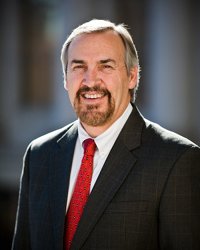
Bill Vidal, author, Boxing for Cuba
In the book, the author shares his best memories of his and his family’s immigrant journey toward a new life in the United States. Peppered among the pages, especially in the early chapters, are a few black and white photos of Vidal and his family.
Born in Camagüey, Cuba, Vidal grew up in Colorado. Following graduation from the University of Colorado, he held various government positions before becoming the city’s first immigrant born mayor. Vidal is now president and CEO of the Hispanic Chamber of Commerce of Metro Denver.

Click to buy Boxing for Cuba
Comments:
Filed Under: Books
Posted by Elena del Valle on July 29, 2013
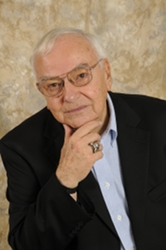
Carl Helvie, RN, author, You Can Beat Lung Cancer
Photo: Carl Helvie
A podcast interview with Carl Helvie, RN, Dr. PH, author, You Can Beat Lung Cancer (see Cancer survivor tells how he did it with alternative, integrative methods), is available in the Podcast Section of Hispanic Marketing & Public Relations, HispanicMPR.com. During the podcast, he discusses surviving lung cancer with alternative interventions with Elena del Valle, host of the HispanicMPR.com podcast.
Carl is a registered nurse with two masters (University of California, Johns Hopkins University) and a doctorate in public health and wellness (Johns Hopkins University) and 60 years of experience as a nurse practitioner, educator, author, and researcher. He has been recognized with the Distinguished Career in Public Health Award from the American Public Health Association in 1999 and listings in Who’s Who, Who’s Who in Virginia, Who’s Who in American Nursing, Outstanding Educator in America, Men of Achievement, American Men and Women of Science, and a listing on Wikipedia. He has published eight books and contributed chapters to four additional ones. He is a 39-year lung cancer survivor who after being given six months to live by conventional medicine personnel turned to natural interventions.
To listen to the interview, scroll down until you see “Podcast” on the right hand side, then select “HMPR Carl Helvie, RN” or click on the play button below. You may download the MP3 file to your iPod or MP3 player to listen on the go, in your car or at home by clicking on “Get HMPR Podcast” above the podcast player. The podcast will remain listed in the July 2013 section of the podcast archive.

Click to buy You Can Beat Lung Cancer
Posted by Elena del Valle on July 24, 2013
By Allison VanNest
Director of Public Relations
Grammarly.com

Allison VanNest, director, Public Relations, Grammarly.com
Photo: Allison VanNest
Are English language learners and non-native speakers at a disadvantage in the U.S. workforce? As the rest of the world begins to rely on English as the primary language of business, and more people are learning English more proficiently, the answer to this question may be, “yes.”
According to a recent study by Grammarly, a leading writing enhancement app, the accuracy of a person’s spelling and grammar may help to predict his career success. One way to get ahead on the job – and in the job search – is to improve your written communication. But to do this, we have to take a closer look at the current state of our educational system.
Read entire article English as a Competitive Advantage
























